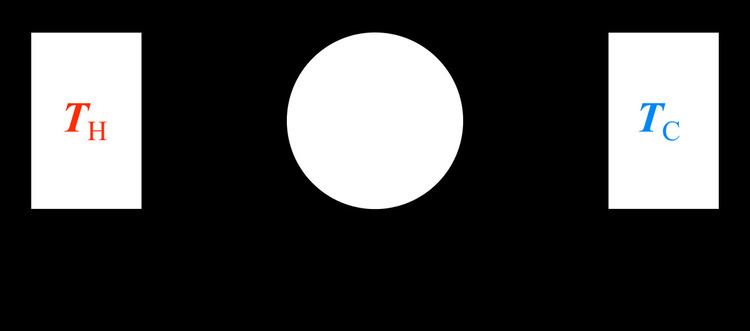 | ||
In thermodynamics, the fundamental thermodynamic relation is generally expressed as an microscopic change in internal energy in terms of microscopic changes in entropy, and volume for a closed system in thermal equilibrium in the following way.
Contents
- Derivation from the first and second laws of thermodynamics
- Derivation from statistical mechanical principles
- References
Here, U is internal energy, T is absolute temperature, S is entropy, P is pressure, and V is volume. This relation applies to a reversible change, or to a change in a closed system of uniform temperature and pressure at constant composition.
This is only one expression of the fundamental thermodynamic relation. It may be expressed in other ways, using different variables (e.g. using thermodynamic potentials). For example, the fundamental relation may be expressed in terms of the enthalpy as
in terms of the Helmholtz free energy (F) as
and in terms of the Gibbs free energy (G) as
Derivation from the first and second laws of thermodynamics
The first law of thermodynamics states that:
where
According to the second law of thermodynamics we have for a reversible process:
Hence:
By substituting this into the first law, we have:
Letting
we have:
This equation has been derived in the case of reversible changes. However, since U, S, and V are thermodynamic state functions, the above relation holds also for non-reversible changes in a system of uniform pressure and temperature at constant composition. If the composition, i.e. the amounts
The
If the system has more external parameters than just the volume that can change, the fundamental thermodynamic relation generalizes to
Here the
Derivation from statistical mechanical principles
The above derivation uses the first and second laws of thermodynamics. The first law of thermodynamics is essentially a definition of heat, i.e. heat is the change in the internal energy of a system that is not caused by a change of the external parameters of the system.
However, the second law of thermodynamics is not a defining relation for the entropy. The fundamental definition of entropy of an isolated system containing an amount of energy of
where
Deriving the fundamental thermodynamic relation from first principles thus amounts to proving that the above definition of entropy implies that for reversible processes we have:
The fundamental assumption of statistical mechanics is that all the
This definition can be derived from the microcanonical ensemble, which is a system of a constant number of particles, a constant volume and that does not exchange energy with its environment. Suppose that the system has some external parameter, x, that can be changed. In general, the energy eigenstates of the system will depend on x. According to the adiabatic theorem of quantum mechanics, in the limit of an infinitely slow change of the system's Hamiltonian, the system will stay in the same energy eigenstate and thus change its energy according to the change in energy of the energy eigenstate it is in.
The generalized force, X, corresponding to the external parameter x is defined such that
Since the system can be in any energy eigenstate within an interval of
To evaluate the average, we partition the
The average defining the generalized force can now be written:
We can relate this to the derivative of the entropy with respect to x at constant energy E as follows. Suppose we change x to x + dx. Then
such energy eigenstates. If
is thus the net contribution to the increase in
Expressing the above expression as a derivative with respect to E and summing over Y yields the expression:
The logarithmic derivative of
The first term is intensive, i.e. it does not scale with system size. In contrast, the last term scales as the inverse system size and thus vanishes in the thermodynamic limit. We have thus found that:
Combining this with
Gives:
which we can write as:
